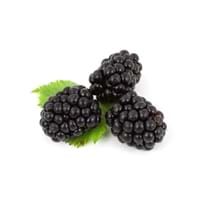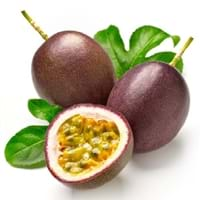Health Benefits
Cancer prevention, Heart care, Increases metabolic rate, Reduces stress, Treatment of dysentary, Treatment of skin Diseases
Asthma treatment, Heart care, Regulates Blood Sugar, Muscle pain relief, Reduces nervous tension
General Benefits
Digestive aid, Maintains healthy cholesterol level, Strengthens bones
Boosts immune system, Controls blood pressure, Digestive aid, Fights against infections, Helps in weight loss
Skin Benefits
Hydrates skin, Skin rejuvenation, Skin revitalization
Anti-aging benefits, Skin revitalization
Hair Benefits
Promotes longer and healthier hair
Protects hair
Allergy Symptoms
Facial muscle tension, Pressure in sinus, Respiratory congestion, Runny nose, Sneezing, Tingling sensation in wrist and face
Anaphylaxis, Breathing difficulty, Decrease in blood pressure, Dizziness, Skin rash, Swelling of face, Swelling of mouth, tongue or lips
Side Effects
Nausea, Vomiting, Might cause change of urine color
Stressed heart, Nausea, Vomiting, Possibly unsafe during pregnancy
Best Time to Eat
Best if taken as a breakfast (or empty stomach), As a snack in the late afternoon, Don't consume at night and before bed, Eat the fresh ones, avoid mixing with any other foods, don't eat after meal., Morning time (before lunch)
As a snack in the late afternoon, Don't consume at night and before bed, Morning time (before lunch), Strictly avoid empty stomach
Vitamin B5 (Pantothenic Acid)
Not Available
Vitamin C (Ascorbic Acid)
Vitamin K (Phyllochinone)
Calories in Fresh Fruit with Peel
Not Available
Calories in Fresh Fruit without Peel
Not Available
Calories in Frozen Form
Not Available
Calories in Pie
Not Available
Season
Spring, Summer
All seasons
Varieties
Prime Ark, Prime Jim, Illini Hardy, Kiowa, Shawnee, Apache, Arapaho, Chester, Hull, Natchez, Navaho and Triple Crown and Von
Australian Purple, Common Purple, Kapoho Selection, Pratt Hybrid, University Selection No. B-74, Waimanalo Selection and Yee Selection
Color
Purplish black
Purple, Yellow
Inside Color
Magenta
Yellow
Taste
Juicy, Sweet
Sweet, Tart
Origin
Asia, Europe, North America, South America
Argentina, Brazil, Paraguay
Grows on
Trees
Not Available
Soil Type
Well-drained
Sandy loam
Climatic Conditions
Dry, Warm to hot climate
Frost free, Sunny, Warm
Facts about
- There are around 2000 varieties of blackberries throughout the world.
- 80-85 degrees is the ideal temperature for its production.
- Leaves of blackberry tree are used to treat sore throats and mild inflammation of the gums.
- Passion fruit tree can grow up to 20 feet in a year.
- More than 200 species of passion fruit are found near Amazon river.
- Oil extracted from its seeds is used in various cosmetics.
Top Producer
United States of America
Brazil
Other Countries
China, New Zealand, Serbia, South Africa
Colombia, Ecuador, Indonesia, Kenya, Peru
Top Importer
United States of America
Brazil
Top Exporter
Mexico
Ecuador
Botanical Name
Rubus Fruticosus
Passiflora edulis
Synonym
Rubus Millspaughii or Rubus Laciniatus
Passiflora edulis f. edulis or Passiflora edulis f. flavicarpa
Subkingdom
Tracheobionta
Tracheobionta
Division
Magnoliophyta
Magnoliophyta
Class
Magnoliopsida
Magnoliopsida
Subclass
Rosidae
Dillenhidae
Order
Rosales
Malpighiales
Family
Rosaceae
Passifloraceae
Species
Rubus fruticosus
P. edulis
Generic Group
Rose
Passion Flower
Difference Between Blackberry and Passionfruit
We might think that Blackberry and Passionfruit are similar with respect to nutritional value and health benefits. But the nutrient content of both fruits is different. Blackberry and Passionfruit Facts such as their taste, shape, color, and size are also distinct. The difference between Blackberry and Passionfruit is explained here.
The amount of calories in 100 gm of fresh Blackberry and Passionfruit with peel is 43.00 kcal and Not Available and the amount of calories without peel is Not Available and 97.00 kcal respectively. Thus, Blackberry and Passionfruit belong to and category.These fruits might or might not differ with respect to their scientific classification. The order of Blackberry and Passionfruit is Rosales and Malpighiales respectively. Blackberry belongs to Rosaceae family and Passionfruit belongs to Passifloraceae family. Blackberry belongs to Rubus genus of Rubus fruticosus species and Passionfruit belongs to Passiflora genus of P. edulis species. Beings plants, both fruits belong to Plantae Kingdom.









